What is Shinkage Ryu?
Shinkage Ryu (New Shadow School) was originally created out of a fusion of Katori Shinto Ryu and Kage Ryu by the pre-eminent sword master Kamiizumi Nobutsuna: a veteran samurai, a commander, and the leader of the illustrious elite fighting unit, “The Sixteen Spears of Nagano”.
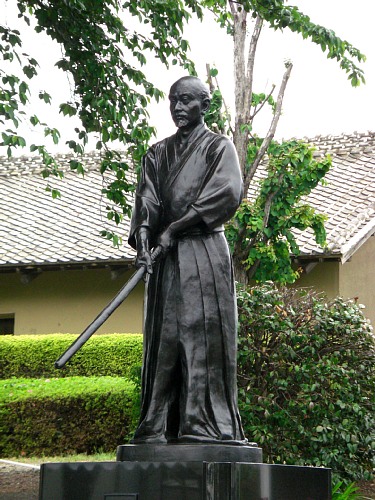
Kamiizumi Nobutsuna, founder of Shinkage Ryu: a revolutionary sword master
Kamiizumi-Ise-no-Kami (上泉伊勢守藤原信綱 born c. 1508, date of death unknown) is a major figure in the development of kenjutsu. He created a new style, one with a unique philosophy. It was markedly different than all the other kenjutsu styles of the day which taught techniques focused on killing the opponent. “The techniques of Shinkage Ryu are unbeatable,” he said. “This arises not from the needless taking of life, but from the true courage required to avoid unnecessary conflict.” Although he created his style in the midst of the Warring States Period (Japan’s civil war period), a time of incessant fighting, he was already preaching a philosophy of peace.
To spread the word about his new style, he travelled all over Japan and taught many disciples. In Kyoto, he taught many courtiers and noblemen of the Ashikaga Shogunate. It is recorded that he had over a hundred disciples throughout Japan. His most famous disciples went on to create their own styles. Kamiizumi is the progenitor of many schools of swordsmanship including Jikishinkage-ryū, Kashima Shin-ryū, Hikita Shinkage-ryū, Taisha-ryū, Shin Shinkage Ichiden-ryū, and Komagawa Kaishin-ryū.
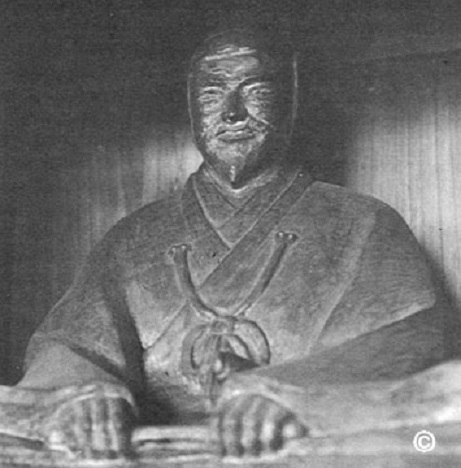
Kamiizumi Nobutsuna: a man on a mission.
Kamiizumi was also an innovator. In addition to creating a new style, he created unique training tools. He created the fukuro-shinai, a bamboo sword encased in a leather sheath. This allowed practitioners to strike and practice techniques and tactics with full power and intensity, instead of having to always pull their strikes when using a bokken (wooden sword). It is the ancestor to the modern kendo shinai (bamboo practice sword). Kamiizumi-Ise-no-Kami was truly a sword genius.
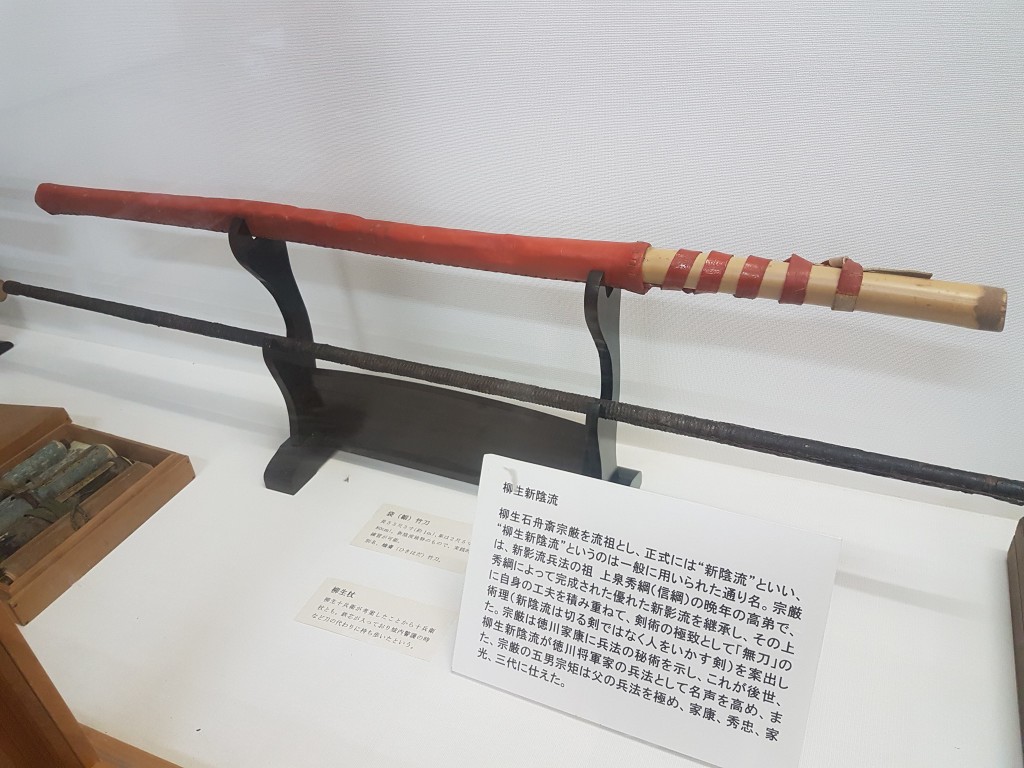
The fukuro shinai: a revolutionary training tool
Kamiizumi had many adventures in his travels throughout Japan. One particular adventure happened in Owari Province and it is so famous that Director Akira Kurosawa used it as the opening scene in his famous movie, Seven Samurai. To read more about this incident, see The Priest of Myoko Temple. Through this incident, we can already see the genesis of the concept of “the Life-Giving Sword”.
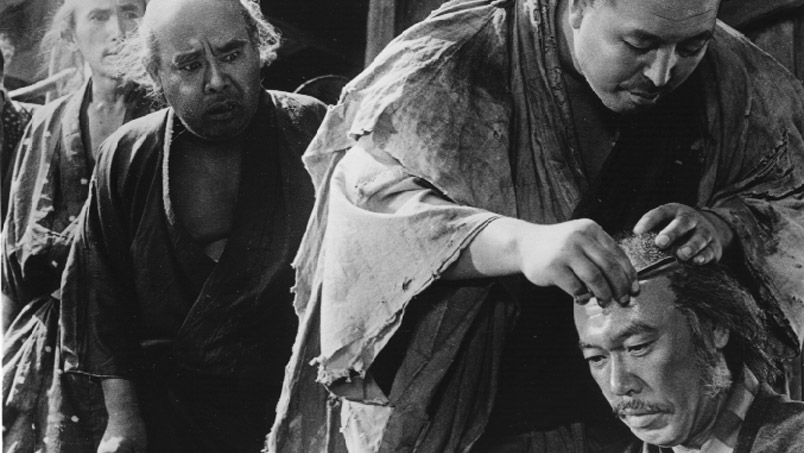
In his travels, Kamiizumi Nobutsuna would eventually meet a young, talented swordsman in the Nara area named Yagyu Munetoshi. The year was 1564. Kamiizumi had requested if there were swordsmen in the area interested in a friendly duel. Munetoshi accepted and was easily beaten three times. Munetoshi fell to his knees and asked to become Kamiizumi’s disciple. Kamiizumi accepted.
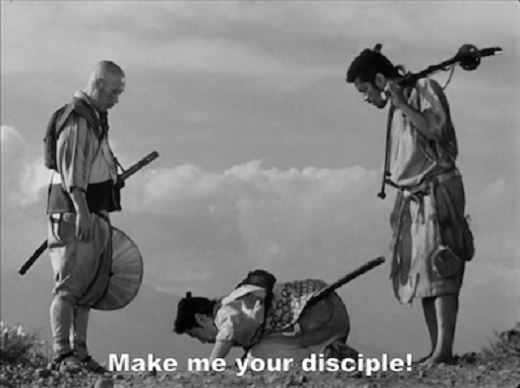
Kamiizumi stayed in Yagyu Village for a year and taught Munetoshi. When he left for Kyoto, he gave Munetoshi some homework: research the concept of “muto-dori” (“no-sword”): facing an armed opponent when you yourself are unarmed. Munetoshi studied hard and demonstrated to Kamiizumi his understanding when he returned a year or so later. Kamiizumi was impressed and gave him an inka-jō (a certificate of highest attainment) and permission to teach Shinkage Ryu. This marks the beginning of the Yagyu family line of Shinkage Ryu; in effect, the founding of the Yagyu Shinkage Ryu.
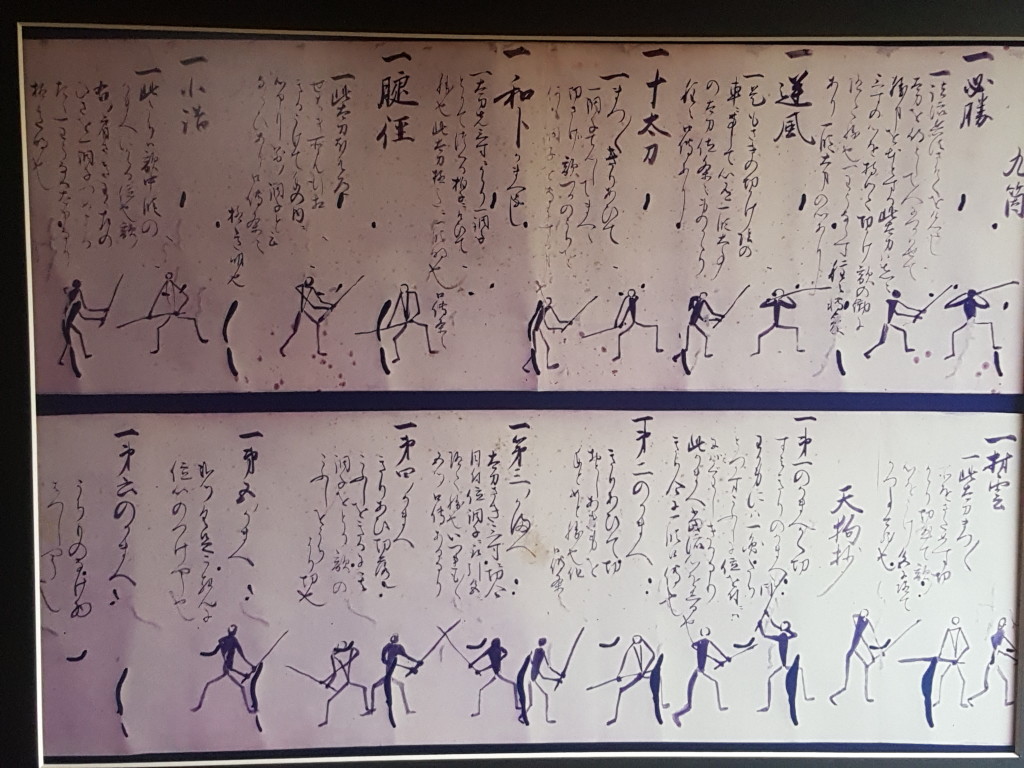
The actual scroll for the kata set Kuka-no-Tachi, enshrined in the Yagyu Museum in Yagyu Village
News of Munetoshi’s skill spread. In 1594, he was asked to demonstrate for one of Toyotomi Hideyoshi’s generals, a man named Tokugawa Ieyasu. Ieyasu was so impressed that he asked Munetoshi to be his instructor in swordsmanship. Munetoshi declined due to his age but recommended his fifth son, Yagyu Munenori. Ieyasu agreed and Munenori went with him.
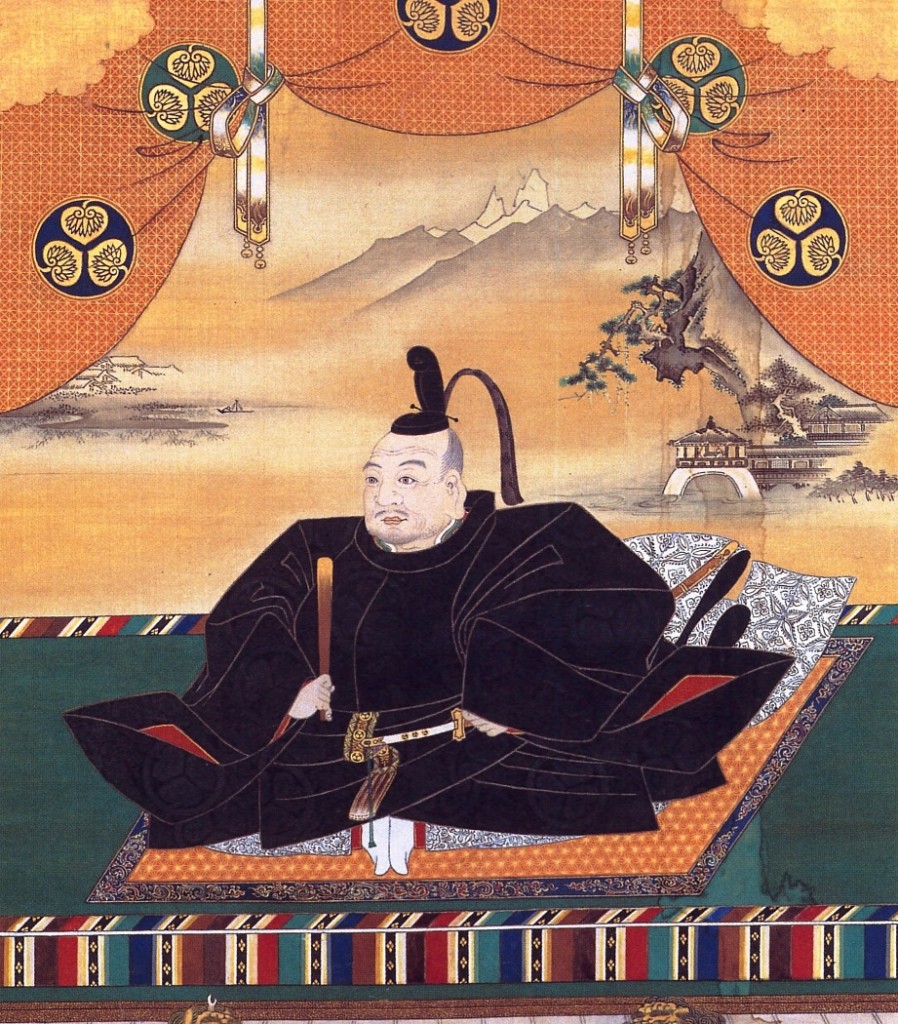
Shogun Tokugawa Ieyasu: The Unifier of Japan and First Patron of Yagyu Shinkage Ryu
Six years later, in 1600, Tokugawa Ieyasu defeated all his rivals in the Battle of Sekigahara and became the undisputed ruler of Japan. Ieyasu became Shogun and Munenori became famous as the official instructor of swordsmanship to the Shogun’s family. As Ieyasu’s star rose, so did Munenori’s. In time, Munenori would serve the Tokugawa Shogunate as an Inspector General (ōmetsuke) and political advisor, a post very much akin to being the Director of an Intelligence Service (e.g., CIA, FBI).
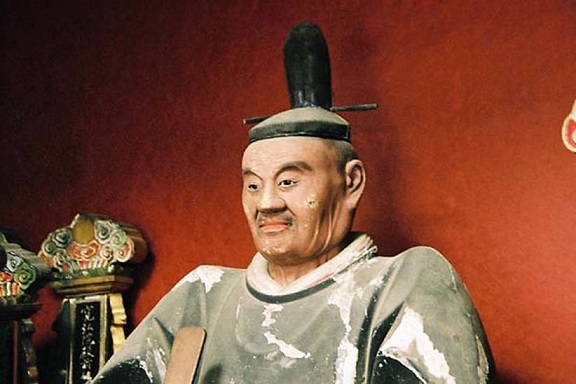
Yagyu Munenori: the swordmaster who made Yagyu Shinkage Ryu famous
Edo (modern-day Tokyo) became the new capital of Japan. In his work in the government and his dealings in the capital as a high-ranking government official, Munenori would also eventually meet and become close friends with the famous Zen master, Takuan Soho (1573–1645), who taught him a lot about Zen Buddhism.
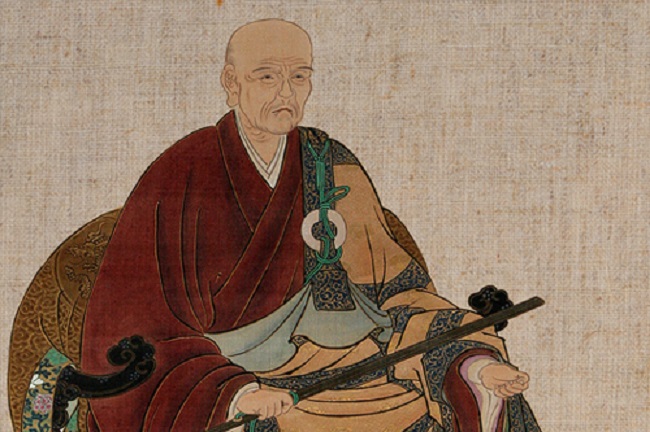
Takuan Soho: the Zen Master who would forever change the nature of Japanese swordsmanship
In 1632, Munenori composed a book called the Heiho Kadensho*, in which he fused many ideas in Zen Buddhism with those of swordsmanship. This book, which not only discussed practical issues in swordfighting but also looked at its spiritual and philosophical aspects, became one of the Bibles of Japanese swordsmanship. Takuan also gave to Munenori as a gift a treatise he wrote on Zen and how it applies to swordsmanship, entitled “Fudōchi Shinmyōroku” (“The Mysterious Record of Immovable Wisdom”). This treatise, published in English as The Unfettered Mind, remains a classic text on how Zen can be applied to martial arts and in particular, to swordsmanship.
* To read the interview where Kajitsuka Sensei discusses the Heiho Kadensho, go here: Kajitsuka Sensei Interview 2015 – Heiho Kadensho

The Legacy of Yagyu Shinkage Ryu
Being the officially recognized sword style of the Shogun and his family, Yagyu Shinkage Ryu would become the most famous style of Japanese swordsmanship in history. Even today, it is regularly featured in samurai dramas and movies. The exploits of its masters, both factual and fictitious, have become the stuff of legends. Most notably, the mysterious Yagyu Jubei Mitsuyoshi (son of Munenori) figures frequently in samurai dramas. Jubei was “dismissed” from court for 12 years for insulting the Shogun Tokugawa Iemitsu, his childhood friend. There are no records of what he did for those 12 years; in effect, he “disappeared” for 12 years. While the official story is that he was sent into exile, others surmise that he was in fact sent on secret missions for the Shogun; hence, the persistence of the myth that Jubei was in fact the Shogun’s spy.

A scene from Yagyu Bugeicho: swordsmen of the Yagyu clan are assembled for a secret mission.
What Others Have Said About the Style
“Kamiizumi Nobutsuna (b.1508) was trained in the tradition of the Kage (Shadow) Ryu, but made a number of changes which prompted him to change his system’s name to Shin-Kage (New Shadow). His emphasis on the mind and mental control in the practice of swordsmanship, his approach to swordsmanship deeply affected one of his pupils, Yagyu Munetoshi. Munetoshi’s son, Yagyu Munenori (1571-1646) was one in a line of capable swordsmen in this family who had a strong impact on the development of the theory and practice of kenjutsu. While stylistically guided by the precepts of Shin-Kage, Munenori was strongly influenced by the views of the Zen priest Takuan (1573-1645). It was to this Yagyu swordsman that Takuan wrote his famous philosophical treatise, the Fudo Shinmyo Roku (Lowry 1985:126).
Under Takuan’s guidance, Munenori came to believe that righteousness is an essential part of the martial arts. Without this moral dimension, swordsmanship is merely the act of killing and avoiding being killed. Demonstrating the impact of Zen on his outlook, Munenori believed that swordsmen must aspire to a plane beyond life and death, must cast off petty distractions if they are to achieve real mastery.
Reflecting the fact that the Yagyu were official fencing instructors for the Tokugawa shogunate and so intimately involved in the social and political order of the day, Munenori also was convinced that kenjutsu could and should make a positive contribution to society. This concept had of course been implicit in kenjutsu, since it was the bushi as a class who developed the art. Munenori was convinced, however, that the proper study of swordsmanship led to a spiritual insight and moral maturity that could not fail to have a beneficial impact on society.
Munenori became increasingly convinced that his style of kenjutsu had nothing at all to do with swordsmanship, and everything to do with the spirit. He even remarked that if his style of swordplay had not already been titled the Yagyu Shinkage Ryu by his father, he would call it the Muto, or No-Sword, Ryu, to underscore this fact. Thus, “servants who attended to Munenori in his old age frequently caught sight of him in his garden, absolutely motionless, sword in hand, occupied not with the physical mechanics of posture and movement but with the abstruse precepts of Takuan’s Zen that elevated the bujutsu from technique to a method of spiritual contemplation” (Lowry 1985:150). (Note 2)
Munenori wrote the Heiho Kadensho, or Chronicles of Strategy, to record his insights for future swordsmen. Like all makimono of the various ryu, this work is difficult to understand, and filled with obscure references which (it is to be assumed) are comprehensible only to initiates of the Yagyu Shinkage Ryu. Munenori’s most enduring contribution to the practice of the Japanese sword arts is his stress on Zen concepts as a route to mastery and his insistence that true swordsmanship is a moral art. “Katsujinken Satsujinken” is a phrase which was written down and hung on the dojo of the Yagyu Shinkage Ryu and is also found on teaching licenses given to adepts. Literally “the sword that gives life, the sword that takes life,” this motto of the Yagyu Ryu is an enduring reminder of the nature of Munenori’s quest for perfection in the way of the sword.”
From: Donohue, John. Kendo: The Way of the Sword.
“Perhaps the strongest principle Munenori tried to instill in his disciples was that swordsmanship was not a skill learned to kill people but rather to fully realize one’s personality, one’s inner being. This concept also played a pivotal role in strategy. Although Munenori had not yet incorporated Zen Buddhism into his swordsmanship during the years he instructed Tokugawa Hidetada, his every move seemed oriented in that direction. To Munenori, swordsmanship was far more than the art of developing fencing techniques; it was life itself, for it trained man to develop his inner self. By training with Munenori, therefore, Shogun Hidetada was learning the essentials of statecraft through swordsmanship.”
Source: Sugawara, Makoto, 1988. Lives of Master Swordsmen, The East Publications, Tokyo, Japan. pp.126-127.
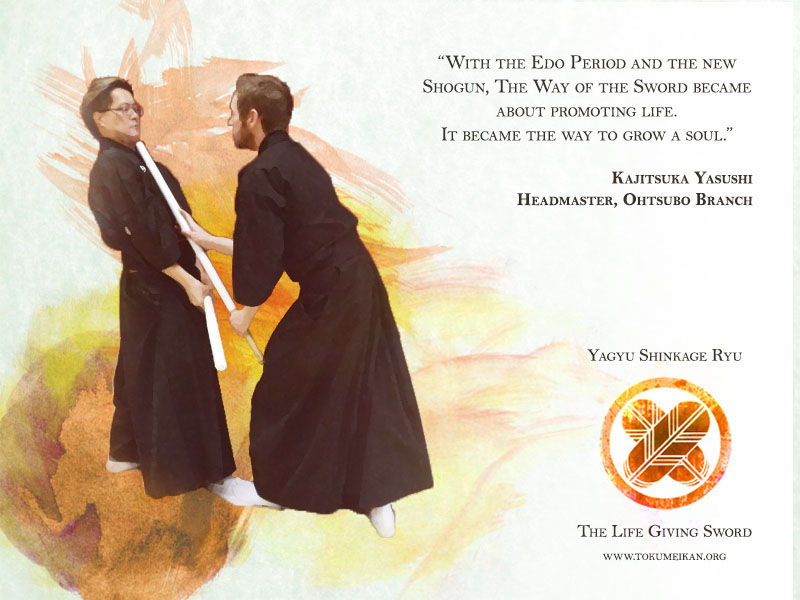
About the Style
Whereas other more pragmatic styles were concerned only with achieving technical superiority with the sword (mastering the tool), Yagyu Shinkage Ryu also devoted a lot of attention to philosophical, spiritual, and moral concepts in swordsmanship (mastering the mind and the soul).
One intriguing ethical concept which distinguishes this style from all others is the idea of the “killing sword” and the “life-giving” sword. Many sword styles embody the concept of the killing sword, in which their techniques and philosophies are focused on only one thing: killing the opponent. As Kajitsuka Sensei (soke of the Ohtsubo branch) has said, by killing the opponent there is nothing but hatred left behind. With the life-giving sword, however, you do not lose but you do not strive to win. Seeking a peaceful resolution, this leaves a sense of respect behind.
The Shogun Tokugawa Ieyasu chose Yagyu Shinkage Ryu as his official sword style because it reflected his policy and vision for the new era of peace. An era of stability and prosperity, ruled by law and order, where indiscriminate killing was prohibited. He needed a life-giving sword for his retainers, for his government officials, for his field agents, and for his “ambassadors” who were sent throughout the land on various functions (to resolve disputes, to notify and enact new measures, to check up on the various daimyo, rivals and allies alike, etc…). He needed a sword of peace to help police the state, promoting benevolence and respect for life, not more senseless bloodshed. And it is this moral and, ultimately, very human quality which makes this style so unique.
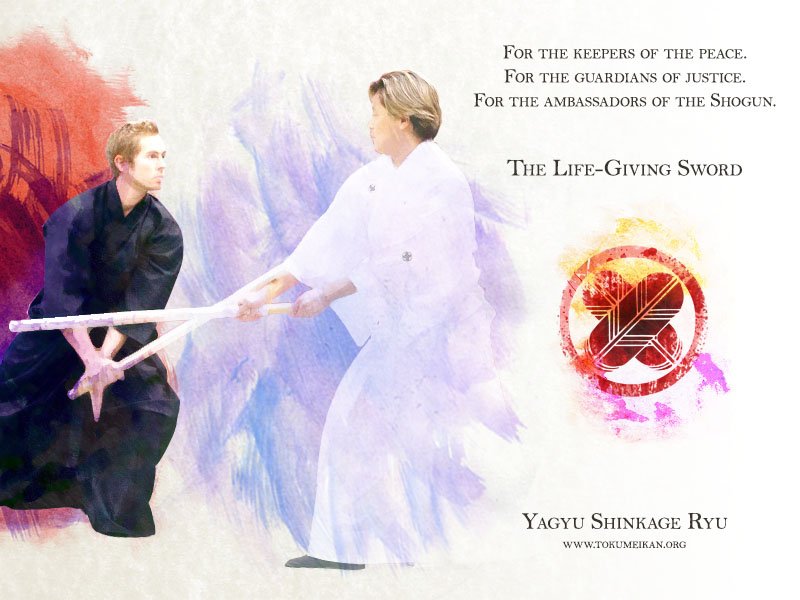
Yagyu Shinkage Ryu is the style for those practitioners who value a swordfighting style that emphasizes finesse over brute force. Having been the Shogun’s official school of swordsmanship, it has a reputation and a glamour second to none and is the most prestigious and celebrated sword style in Japanese history. Elegant and refined in its movements, coupled with a philosophy focused on preserving life and promoting peace, it is a noble style, a style fit for kings and princes.
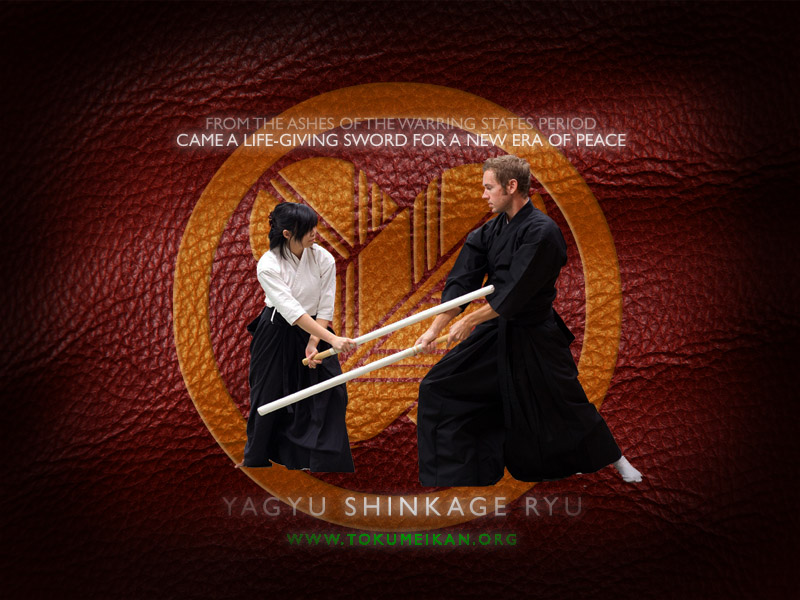
__________________________________________________
To learn more about this peaceful school of swordsmanship, watch this great documentary entitled “On the Road to the Sword of Peace”. It documents Canadian kendoka Stephen Nagy’s journey to discover the roots of the “peaceful sword” in the famous Yagyu Village in Japan.
Here is a partial transcript of the ideas discussed in the film:
Nagy: Yagyu Shinkage Ryu’s style of fighting is that, almost all the strikes are to the hands to disable the opponent, not kill the opponent. The purpose of Yagyu Shinkage Ryu is to minimize what kind of damage you do to the opponent… but to stop them from the attack.
Narrator: Thwarting the opponent without hurting him is the ultimate goal.
Hatamine Sensei: We aim for the opponent’s hands and arms. That’s because we don’t want to hurt him badly… let alone kill him. It’s the Sword of Peace.
Narrator: The Sword of Peace philosophy greatly influenced the way the Shogun ruled the country. It formed the foundation of the Edo Period, which continued 250 years without war.
Narrator: It was here that the Master Yagyu Muneyoshi is said to have understood the Principle of the Sword. Muneyoshi had the inspiration for his Sword of Peace when he split open this rock: he determined to use his weapon only when absolutely necessary.
Nagy: My journey to learn about Yagyu Shinkage Ryu has been really interesting. It’s left me with a feeling that Yagyu’s teachings focus on those who are powerful being humble and always trying to help people around you. I think this belief or philosophy has implications for today’s society. With the strong helping the weak, perhaps we can break that vicious cycle of war and conflict that we see in today’s society. With that in mind, what I’d like to do is just stay around here and soak up the atmosphere, and hopefully be inspired by it, like Yagyu.
__________________________________________________
